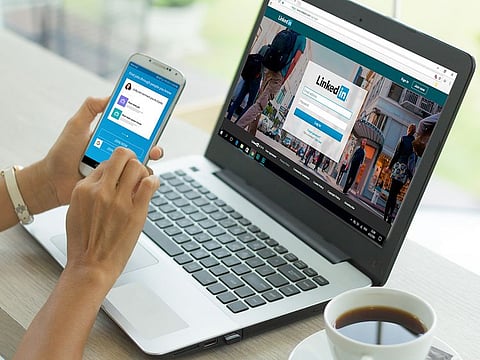Finding a job in the UAE: LinkedIn study shows strongest connections are not the ones helping you
The five-year study analysed user activity of 20 million people on the platform

Dubai: For jobseekers, using LinkedIn to foster new connections, and use existing ones, for referrals has become second nature. The platform focuses on helping users increase their number of 'connections', who could then help out with a referral or a recommendation.
LinkedIn applies a specific algorithm that suggests new connections for users, the 'People You May Know' (PYMK) algorithm, very similar to what other platforms such as Facebook and Instagram use to suggest new 'friends'.
A group of researchers at LinkedIn, Harvard Business School, and MIT studied this algorithm, and over two billion connections of 20 million users over five years, to understand which LinkedIn connection actually helps a user land a job. The study analysed how connections led to the acceptance of 600,000 jobs, over a period of five years.
So, who's helping you find that job?
'You are as strong as your weakest link' - this statement summarises the results of the study. The researchers revealed that 'moderately weak ties' generated the most job chances. Specifically, your strongest connections have the least impact on your job prospects.
As your links to a connection grow, the chances of that connection helping you get a job diminish, according to the findings. "If you share more than [10 mutual connections] with someone on LinkedIn, the usefulness of your connection to the other person, in job-hunting terms, diminishes," the research team told MIT news. The connections slightly stronger than your weakest were the most helpful, researchers said.
The 'strength' of one's connections was measured by interaction intensity with the number of messaging interactions people had, along with the number of mutual connections. The paper, “A Causal Test of the Strength of Weak Ties,” was published on September 15.
LinkedIn explains PYMK
"The People You May Know feature on your My Network page suggests LinkedIn members for you to connect with. These recommendations are based on commonalities between you and other LinkedIn members, as well as contacts you’ve imported from your email and mobile address books. For example, you may have shared connections, have similar profile information and experiences, work at the same company or industry, or may have attended the same school."
The power of weak ties on the site is especially strong in high-tech industries, researchers added.
Debate over ethical propriety
The illuminating findings are not only why the study is being talked about this week. During the course of the research, LinkedIn adjusted the PYMK algorithm, so some users saw a higher concentration of suggestions to whom they had strong ties, while others received more suggestions to people with whom they had weak ties.
Critics said that this tweak, solely for the purpose of the study, would have put millions of users at a disadvantage in terms of real-life job prospects during the term of the research.
Linkedin said in a statement, according to an NYT report, that during the study it had “acted consistently with” the company’s user agreement, privacy policy and member settings.
The goal of the research was to “help people at scale,” Karthik Rajkumar, an applied research scientist at LinkedIn who was one of the study’s co-authors, told NYT.
“No one was put at a disadvantage to find a job," he added.
Sign up for the Daily Briefing
Get the latest news and updates straight to your inbox


